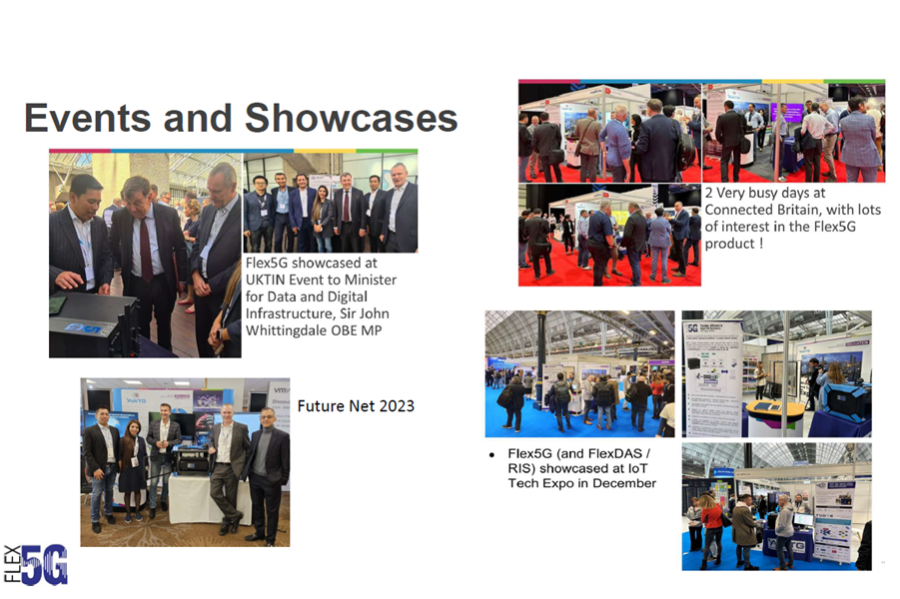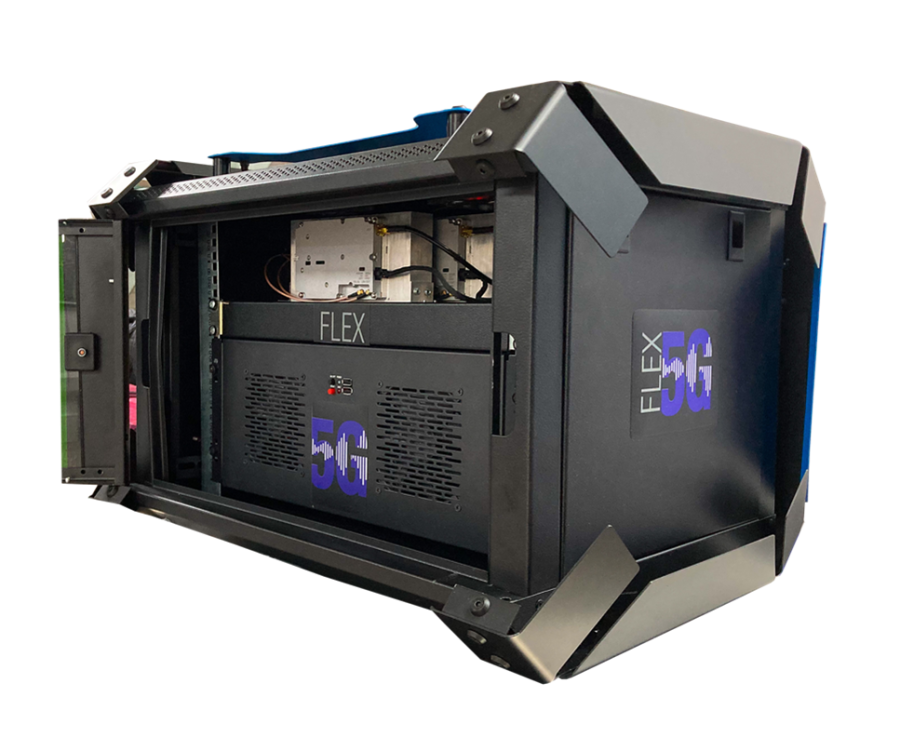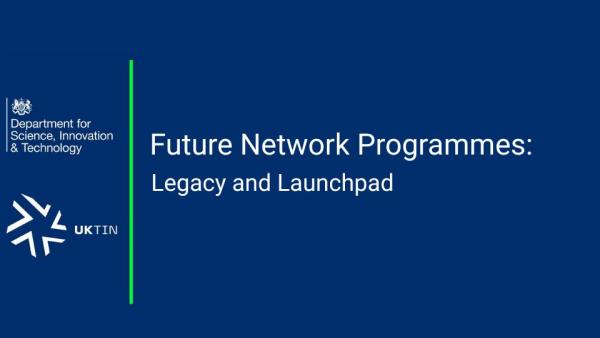
The Flex-5G project has successfully developed an Open RAN compliant 5G Standalone (5G SA) network. Leveraging a unique approach to Software-Defined Radio, Flex-5G’s network solution exhibits remarkable adaptability, dynamically responding to real-time variables such as traffic demands and spectrum availability. This innovative flexibility ensures the extraction of maximum performance and efficiency tailored to a wide array of 5G use cases.
- DSIT funding: £4.7m
- Partner funding: £2.7m
- Project dates: 01/01/2022 - 30/09/2023
- Locations: London, Surrey, Cambridgeshire, Berkshire, plus other locations across the UK
- Project Partners: AWTG Limited, Lime Microsystems Limited, University of Surrey, Vodafone Limited, Commscope Solutions UK Limited, Viavi Solutions UK Limited, Emirates ICT Innovation Center (EBTIC) (non-funded); O2 (UK) Limited (non-funded), Cambridgeshire County Council (non-funded), Amazon Web Services (AWS) (non-funded), Zain Saudi Arabia (non-funded)
Project Objectives
Network in a Box
- Create “Flex-5G”, a complete Open RAN 5G SA network
- A compact modular radio base station supporting all bands in 5G NR Frequency Range 1
System Integration
- Integrate and build on the capabilities of a custom in-house 5G core network
- Create and validate a rigorous security framework to address the considerations that arise in cases of “softwarisation” and extreme flexibility
Market Disruption
- Reduce costs of 5G Network Deployments by improving equipment availability and scalability
- Enhance customisation to use cases, upgradability, deployment options, economies of scale
Product Development
- Development and enhancement of cutting-edge Radio Chipsets and Boards to improve performance and accessibility to spectrum
ORAN Development
- Create and integrate AI-driven spectrum and network management framework to leverage flexibilities made possible by Flex-5G
- Development and contribution to ORAN technology to increase performance and efficiency of 5G networks
Technology Development
- Enable key advances on “Massive MIMO” technology, improving the performance and practicality of high-end 5G network
- Integrate packet-based synchronisation technology such that the Flex-5G solution can operate in areas without satellite coverage for synchronisation

Highlights and Insights
- The ecosystem the project has brought together is impressive - from early proof of concept to operational deployment. From a Diversification standpoint including Vodafone, O2 and Zain within the project meant operator support and collaboration. As well as support from hyperscaler AWS.
- Network in a Box Solution, deployed on commodity off the shelf hardware, ready for commercial deployment
- Proven Inter-operability with Traditional Networks through Operator validation
- Integration with different Core Network Platforms, across dis-aggregated HW, and different Operating SW stacks – a truly flexible solution
- Programmable Radio chipsets in a small form factor for flexible/scalable deployment
- Low-power SDR module (LimeSDR X8) with a higher number of channels and optimized power consumption
- Contribution to the knowledge of and advancements in Open RAN Physical Layer and MU-MIMO Technologies
- Developed and Publicly Demonstrated the First Software-Based PHY Design and Implementation Framework for Highly- Efficient Open-RAN MIMO, that also enables future Open-RAN PHY cloudification
- First xApp for interoperable MU-MIMO rate adaptation using both Linear and Non-Linear processing
- OSS and SMO developed rApps developed
- RIC integrated using O-RAN SC RIC
- Security strategies implemented
- Extended AI interface in both Near and Non Real-Time (RT) RIC
In terms of development the project has demonstrated how the solution can be deployed into private and public networks.
It has also demonstrated benefits to Private Networks, in particular for Small to Medium Enterprises, focusing on the simplicity in deployment to provide rapid 5G services attached to existing IT Infrastructure. Built on a Linux platform, it is a platform ready for existing apps, and apps developers to collaborate and innovate.
Cost is also a key factor. Cost reduction is made possible by virtue of its software-basis and reliance on GPPs along with the associated economies of scale and upgradability. Performance and Configuration flexibility are made possible by a software defined radio and management platform, allowing the system to be dynamically optimised to suit use case requirements.
The solution has also demonstrated its suitability for use in public networks given its flexibility and speed of deployment, allowing it to be rapidly popped up for coverage or capacity boost in localised areas. Cost and energy savings were also achieved by using off-the-shelf GPPs and commodity hardware, through innovative implementation of field programmable hardware.

Next steps after the project funding period
The University of Surrey is one of the winners of the SBRI: Future Telecommunications Challenge, for the further development and commercialisation of the corresponding Non-Linear MIMO processing technology (NL-COMM: Practical, Non-Linear Processing for High Performing Communications so is hoping to further their efforts to commercialise this solution through that work.
The Flex-5G partners are looking to continue their collaboration with codebase developers such as OAI to improve stability, expand functions and features of the Open RAN solution, enabling greater diversification in the supply chain.
Read the End of project report here









